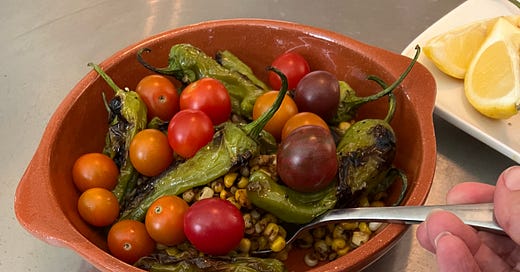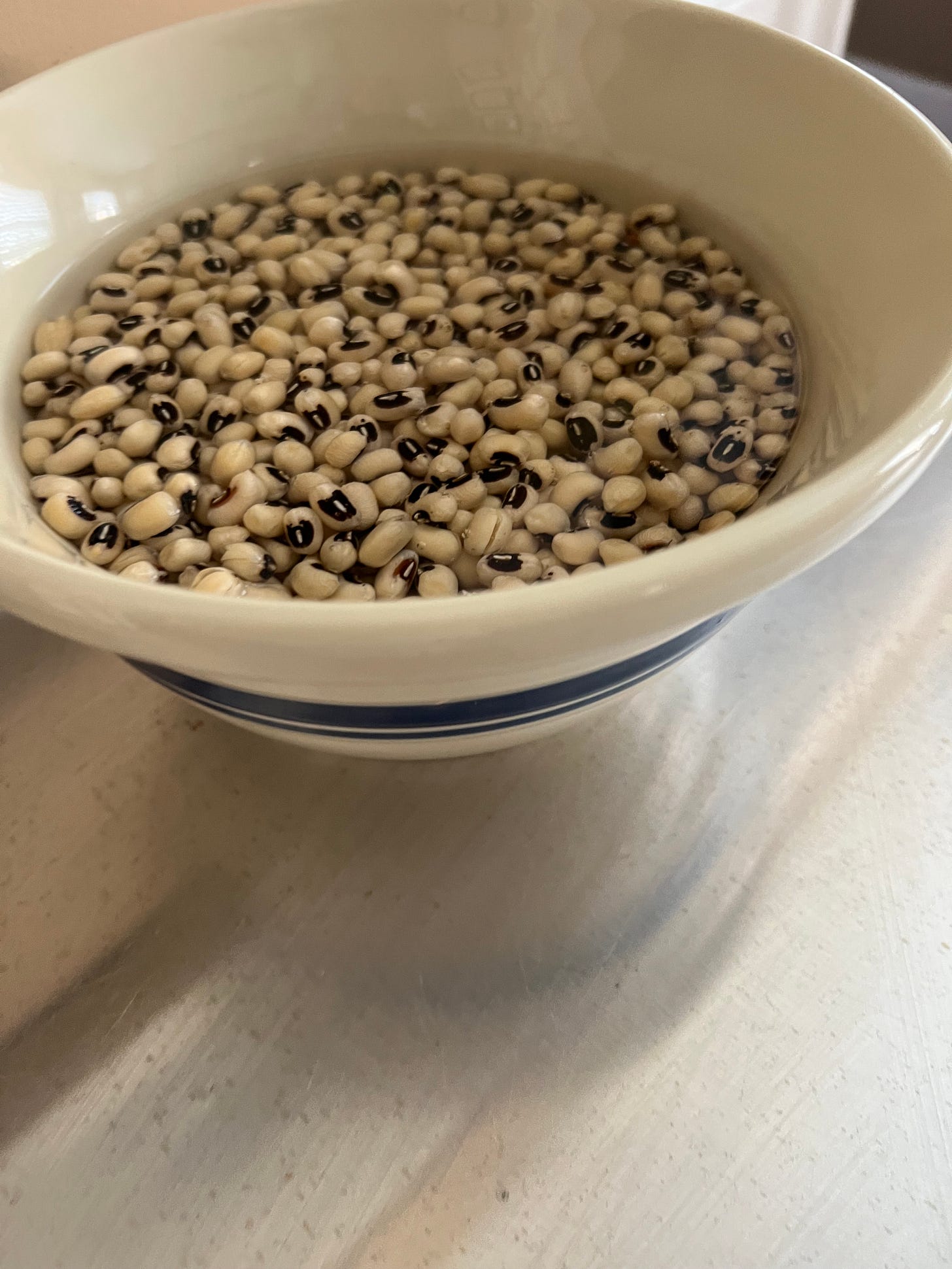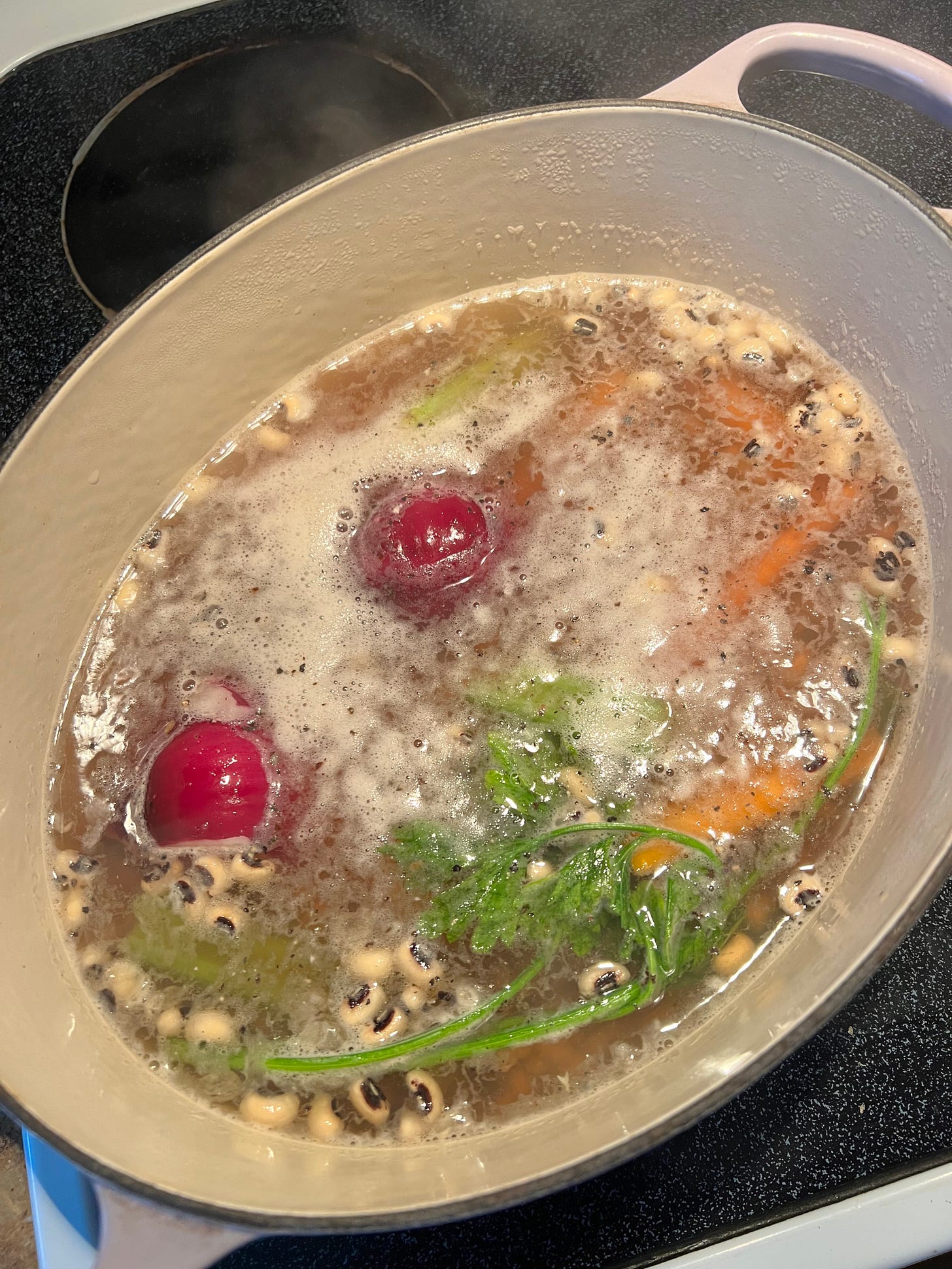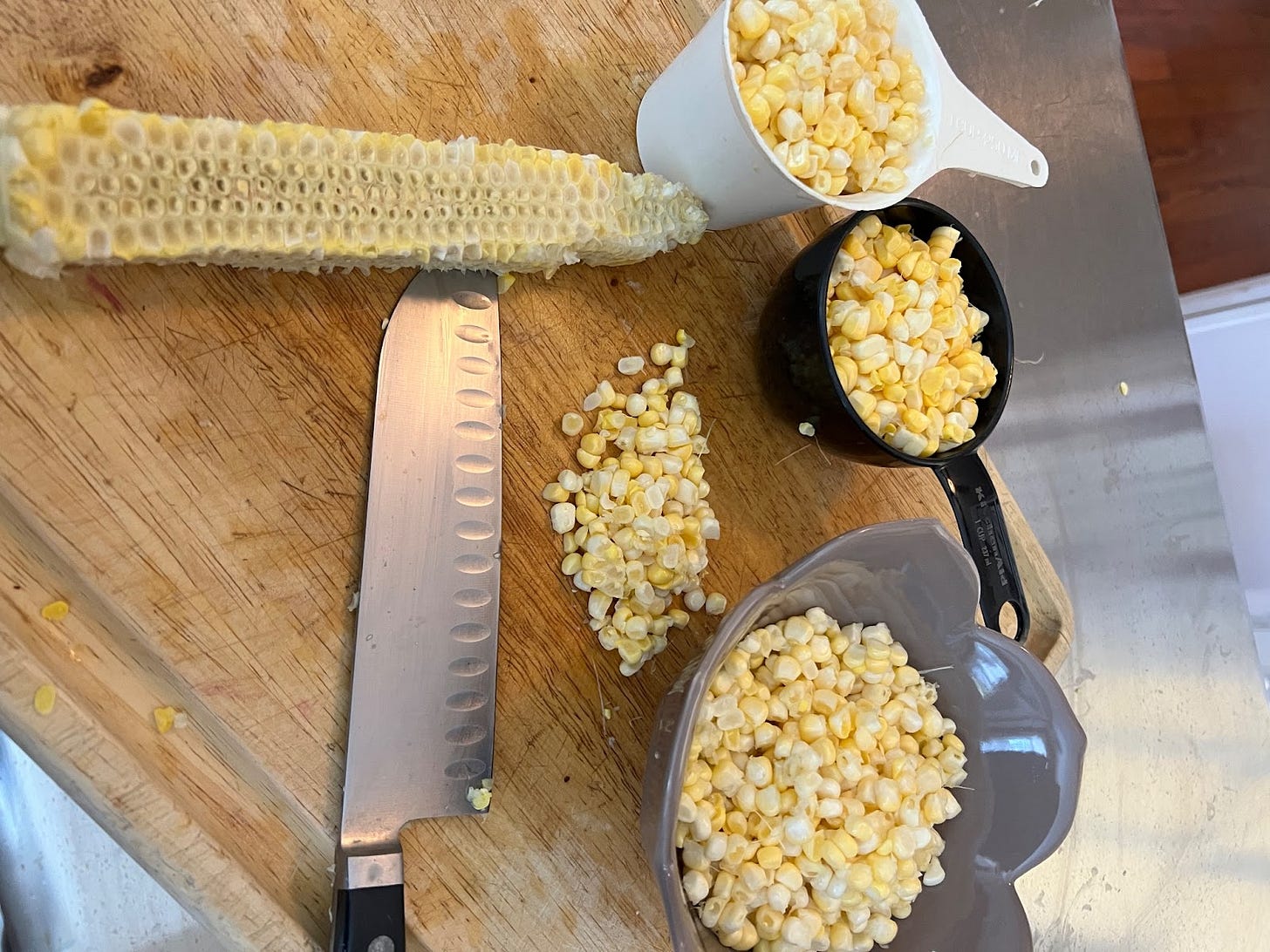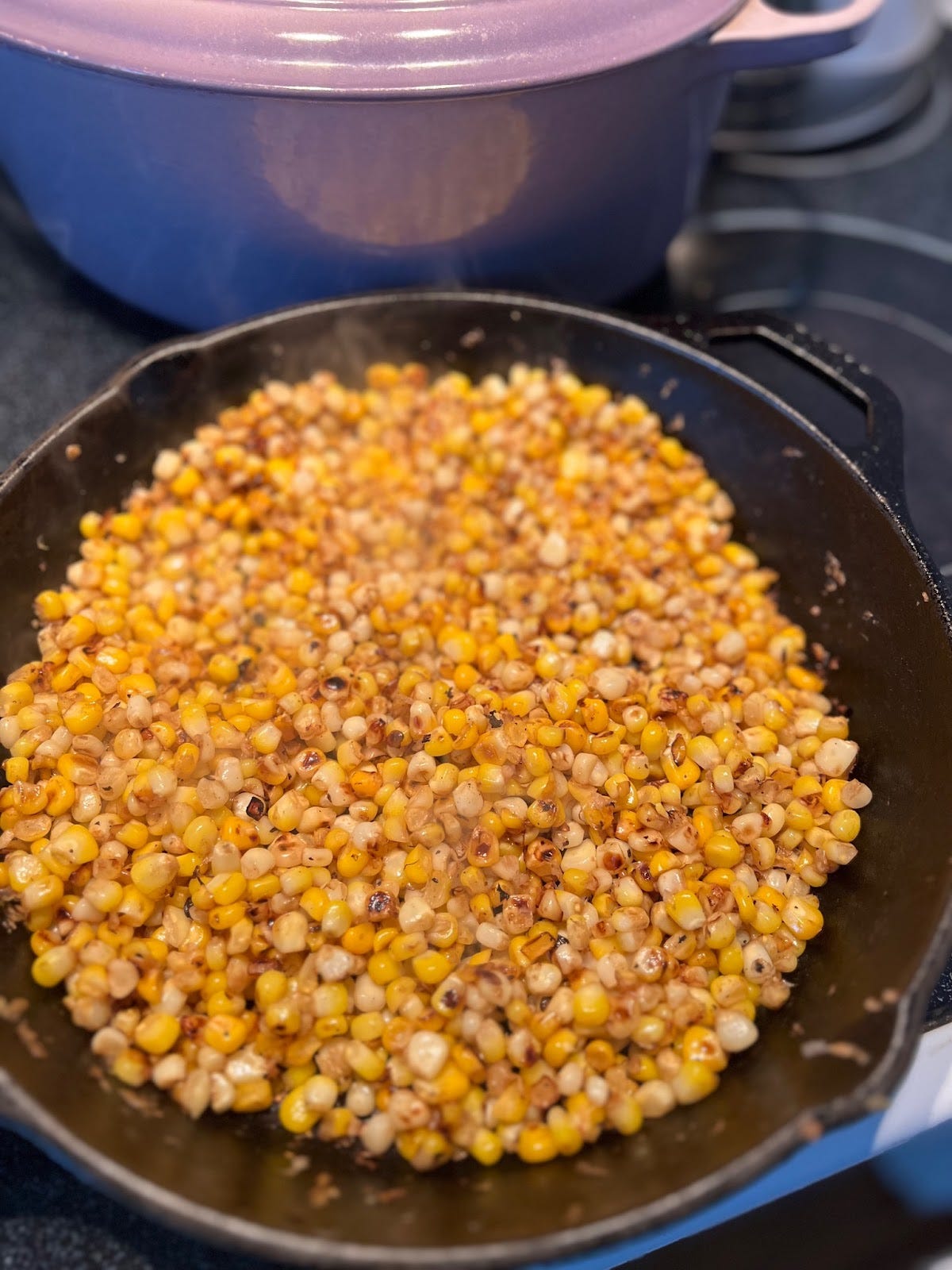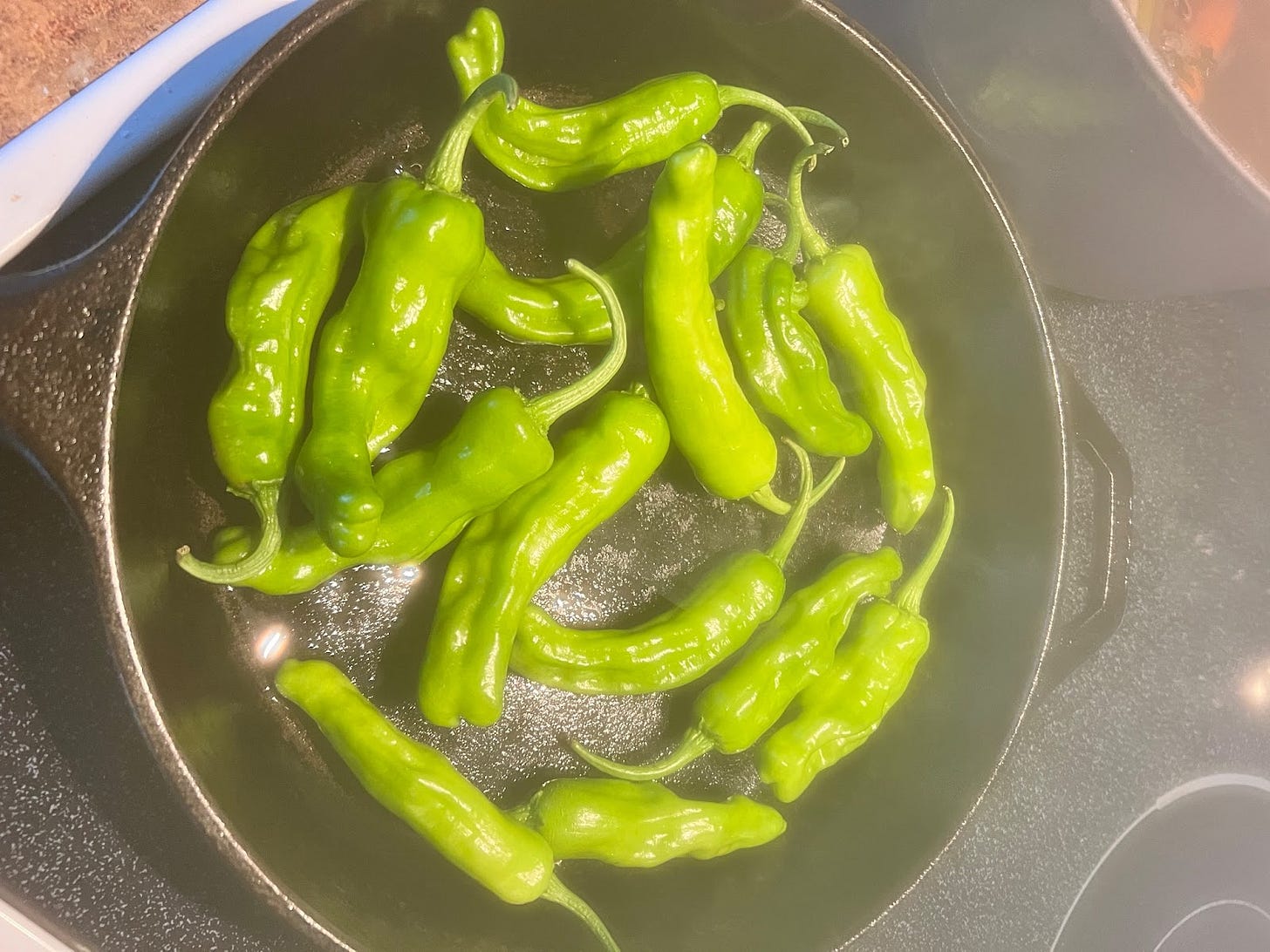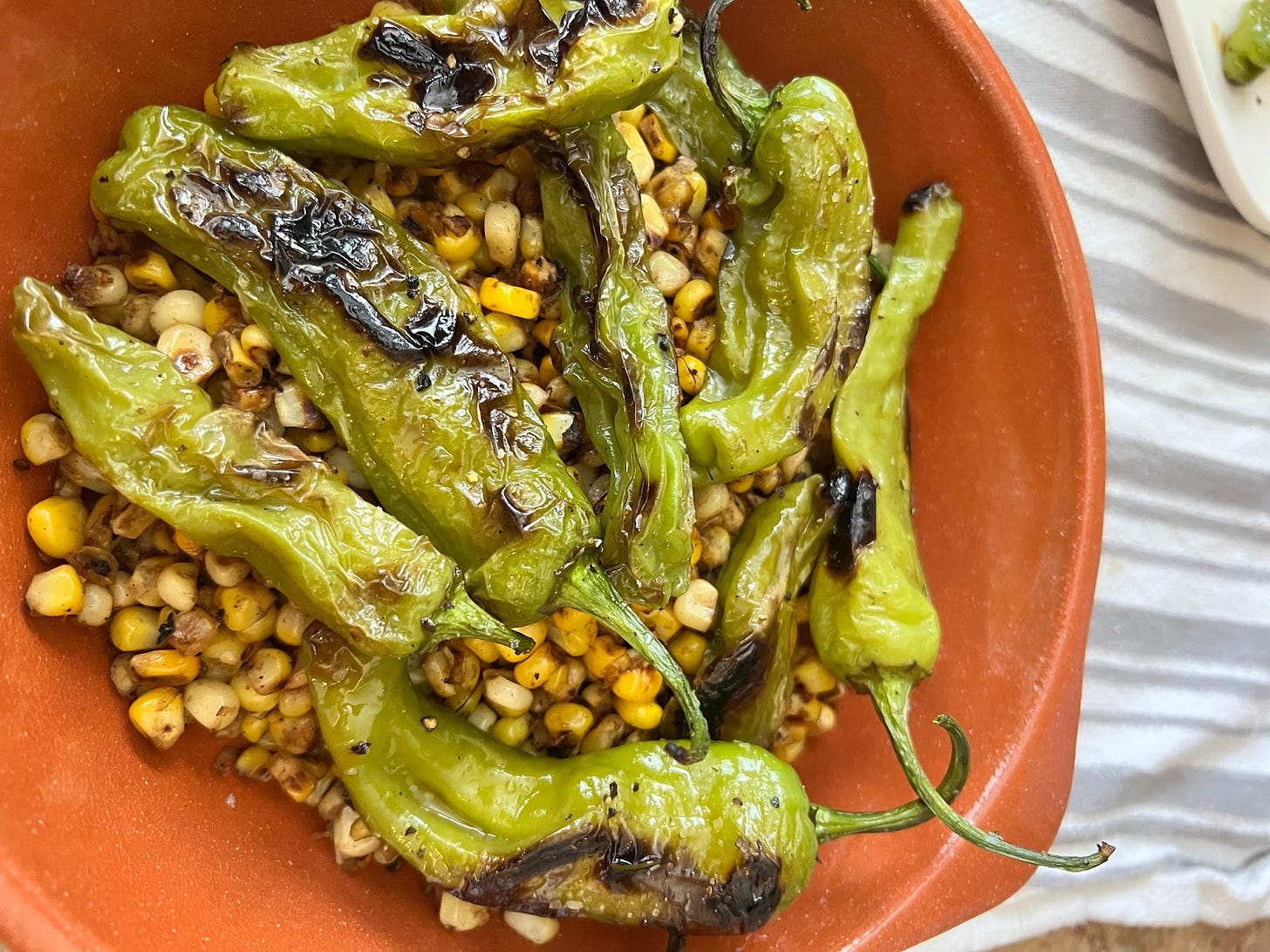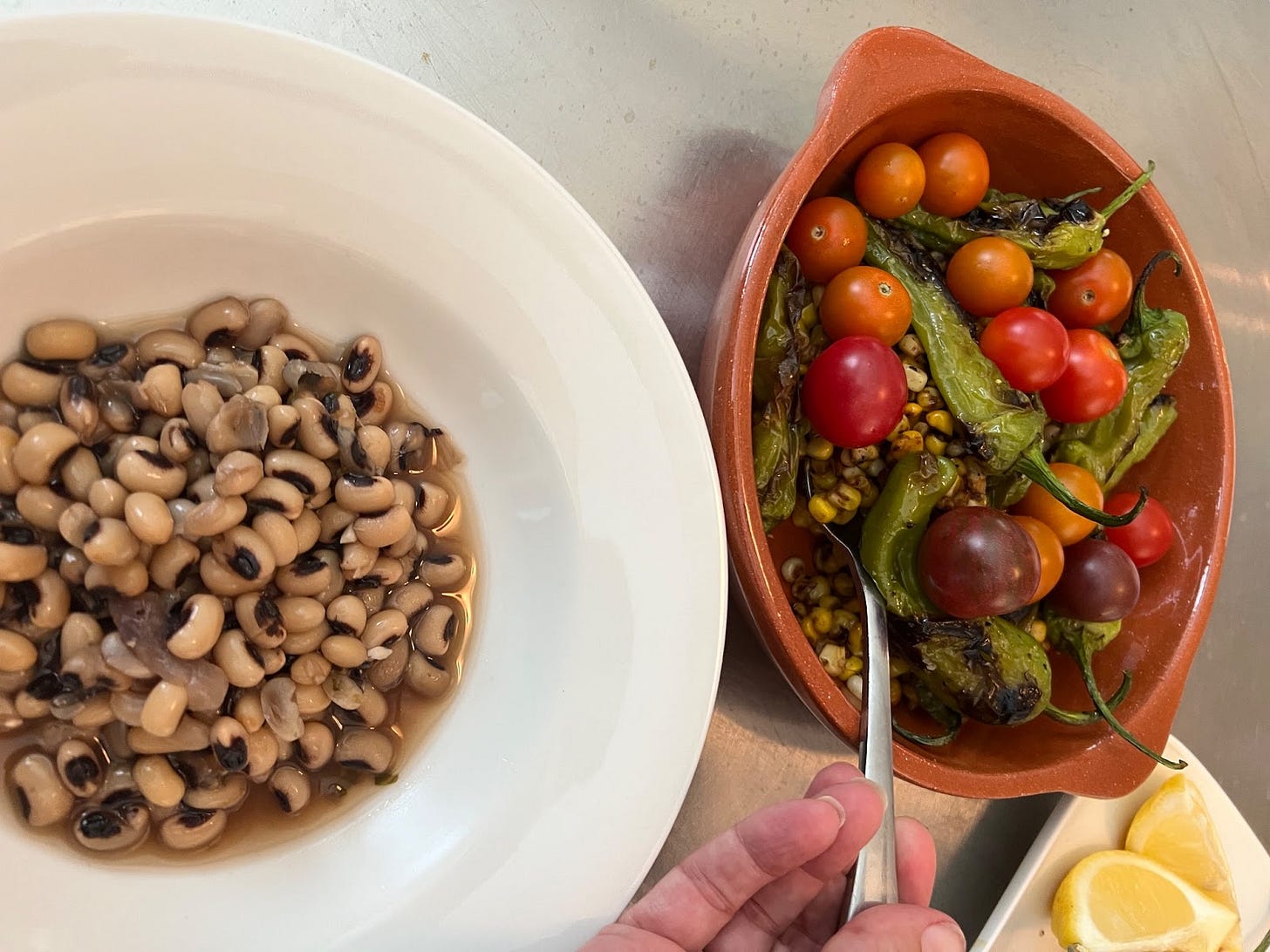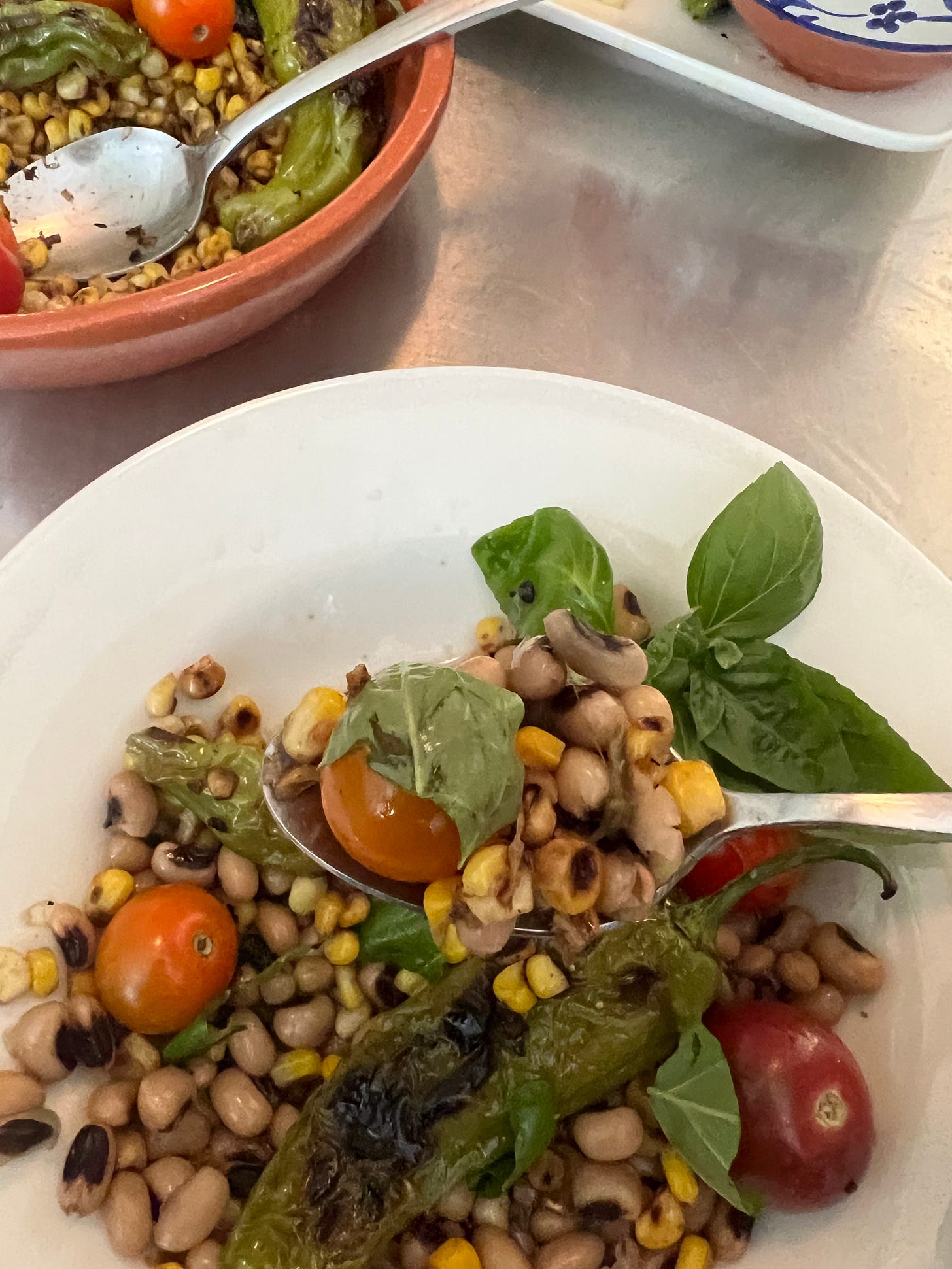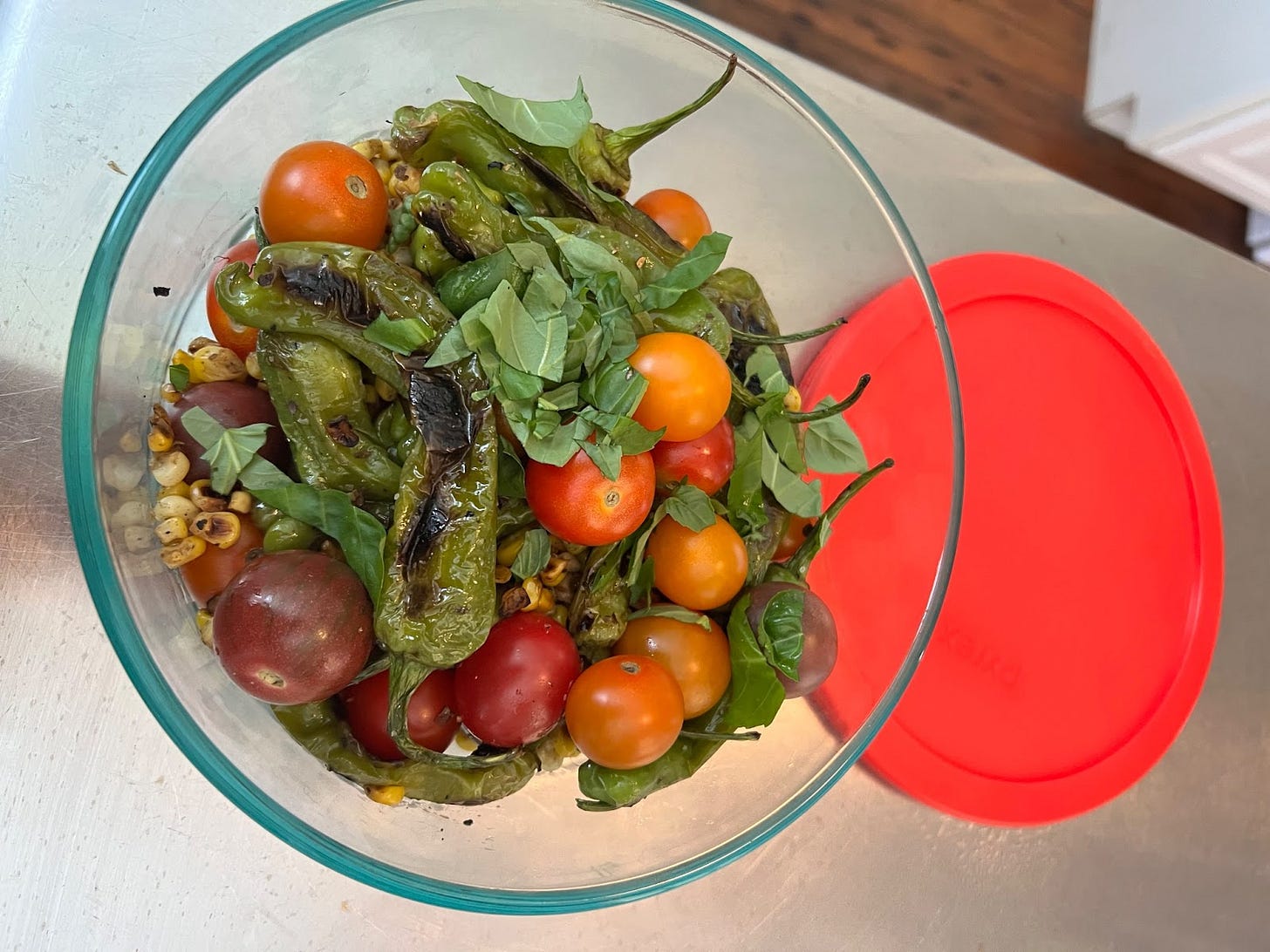Last week, we discussed the importance of weekly food prep where I gave you some suggestions for easy meals, and more specifically, what does our bounty look like in the month of August. Maybe you’ve moved from a sprinkle or a tablespoon of beans to eating servings of beans quite often. Perhaps you are taking beans for lunch versus ordering out at work. You’re noticing comments or jokes about beans from friends and family are more the norm than the exception. You have no expectations that anyone will join you in eating beans. What is going on? What is different? You.
You are making a change and change is sometimes hard for those around you. Why? There are two concepts, first order and second order changes, that are discussed within family therapy and systems therapy. These terms refer to different levels of change within a system, such as a family or with an individual's behavior. In the context of a family member deciding to change their eating habits to incorporate healthier food choices like beans and legumes, it may upset what was known to be the norm. Let's explore the differences between these two types of changes using the context of beans and provide examples for each.
First-Order Change:
First-order changes are relatively small, surface-level adjustments that maintain the overall structure of the system. These changes often address specific issues or symptoms without altering the underlying dynamics. In the case of changing eating habits, a first-order change might involve simply adding beans and legumes to one or two meals per week. This change doesn't challenge the fundamental way the family eats but introduces a new element to their diet.
Example: The family decides to have a "Meatless Monday" where they prepare a bean-based meal every Monday night. This change is relatively simple and doesn't disrupt their usual eating patterns significantly. Maybe even kind of fun.
Second-Order Change:
Second-order changes are more fundamental and profound. They involve altering the underlying dynamics, rules, and patterns that govern the system. In the context of changing eating habits, a second-order change might mean shifting the entire approach to eating by incorporating more plant-based meals and reducing meat consumption on a regular basis.
Example: The family decides to transition to a flexitarian diet, where they prioritize plant-based meals and minimize their meat consumption. This requires a fundamental shift in their meal planning, grocery shopping, and cooking habits. Especially if there are children or people in the family who do not like beans.
OK…now what?
Here’s the problem, in your case “the family” did not decide anything. Only you did. Therefore, the family’s equilibrium is off and nothing is right with the world until it is set back to normal. Unfortunately this is all very uncomfortable for everyone involved. It is also why oftentimes people give up new eating habits because the planning, the shopping for different ingredients and cooking different meals is hard and sometimes it is all too much. And nothing reeks more than the smell of giving up a goal barely begun.
It is no different for your friends and your social circle. If you meet your friends each week at the pub and now you are eating differently, this needs to be worked out. If your night out also includes a meal, you may want to make a small change consistently first. For example, look up the menu ahead of time and find a selection-sometimes it may be making a meal out of the side orders if the restaurant does not offer any options with beans. You can eat your serving of beans at home before you go. You’ve changed your eating habits, not your friends. If you show up with your new found freedom including the way you eat it may not necessarily be you, but the break in the social rhythm of the group. Ease into it. But don’t be afraid to discuss since these are your friends and you are taking on a new dietary way of eating that is unfamiliar to some. Since you plan on continuing to eat beans because you are feeling better, how will you negotiate this in your daily life with your favorite people?
Setting Boundaries
Enter boundaries. It is a game changer. There is no one right way to set a boundary. Much of it is about understanding your own needs. Setting boundaries should not be something you avoid. In the end it will bring an open conversation to the fore. For those of you who want a bit of advice in this area I would suggest the following:
Clarify Your Intentions:
Reflect on why you've chosen to incorporate beans into your diet and why it's important to you. This clarity will help you communicate your choices effectively. When they see you consistently show up for yourself they will support your choice. They may even join you.
Stay Confident:
Approach the situation with confidence in your decision. Remember that your dietary choices are for your well-being, and you have the right to prioritize your health. You may hope your partner, husband, wife, friend, brother, daughter(fill in the blank) will join you on your new great idea. You can ask but only if you ask without expectations. If not, be prepared, your invitation may be insulting if the person you are speaking to was not ready for it. You must be ready to go it alone. You are worth the effort.
Use "I" Statements:
Frame your boundary-setting using "I" statements to express your feelings and preferences without sounding judgmental. For example, say, "I've been focusing on incorporating more beans into my diet for health reasons" rather than "You shouldn't be eating trans fats."
Bring Your Own Food:
If you're all planning to eat together, consider bringing your own bean-based dish that you can enjoy while your friends have their favorite food. This way, you're participating in the meal without compromising your choices.
Respond Gracefully to Reactions:
Be prepared for a variety of reactions from your friends. Some might be curious, while others might not fully understand your choice. Respond with patience and understanding.
If you find there are still a few people who do not understand and are questioning you and your beans. And by the way I doubt this will be true if you are friends/family and you have told them it means something to you but let's just say there is an outlier here. Your health and wellness is more important than their comfort. Here is your permission slip to tell them so. At the same time I hope this information on first and second order change has educated you and you will remain empathetic to your friends and family. Their teasing and questioning is part of their processing and understanding the change.
My final advice:
Remain flexible
Creating boundaries is important but be open to occasional exceptions.
While you have changed your eating habits many or most of your family and friends may be enjoying their own meals. Recently, I made ribs for a Friday night dinner with friends. Food is my love language and although I don’t eat ribs the process of creating a meal I know my circle will enjoy makes me very happy. There were other side dishes filled with veggies and beans but the point I am making is your choice is your choice. You get to eat the way you would like and others can eat what they like. I have made many veggie-forward meals that my friends have enjoyed without snarky comments, sometimes asking for the recipe; and it is also nice to prepare something I know the omnivores in my circle will love. It's about respecting everyone's agency to eat as they wish.
Recommended recipe
Roasted fresh corn, blistered peppers, and cherry tomatoes over black-eyed peas. Garnished with fresh basil and a squeeze of bright lemon.
Its summertime folks and the farmers markets are stocked. I knew I wanted to make black-eyed peas from scratch but what to serve with them? I decided to let my market visit do the talking.
First, lets make the beans–This is my Slow Sunday method:
Soak your beans overnight–I had a pound of dry beans
1-2 carrots, celery and garlic (broken up)
1 onion sliced in half
Bayleaf
Aromatics (I had parsley on this day)
Place your heavy pot on the stove. Over medium high heat, I add a few tablespoons of veggie stock, you can add water or olive oil if you don’t have stock. After two minutes add everything except the bayleaf and aromatics. Turn the heat to medium and let the veggies sweat a bit~two minutes. Add the parsley and bayleaf and stir. In another two minutes add your beans. I add them along with the bowl of water that I soaked them in. I soak them in Brita filtered water and most of the water is gone. I know some people like to rinse the beans again. I choose not to. If you want to rinse them please do so. Then add enough water to cover your beans by about 1.5-2 inches. Turn your heat to high. (Do NOT add salt) Once your pot comes to a boil, set the timer for approximately 15 minutes. After that, turn the temp down to a simmer and set the timer for 30 minutes. Cover your pot but check on it every now and then to be sure you don’t need additional water added. You will smell the delicious beans around the 25 minute mark. Test a bean by blowing on it and then taste, it should be nearly done, not hard. (If they are still hard then continue to cook in 15 minute increments.) Next, add some salt and simmer for 5 more minutes. Then turn off the heat. While the beans are cooling down, continue with the following recipe.
Second, let's acknowledge what I found at the Farmer’s Market:
Fresh corn, shishito peppers and cherry tomatoes.
Remove the corn from the cob (My four ears netted 3 and ¼ cups of niblets). Heat a cast iron skillet with two tablespoons of olive oil. Once hot, add the corn niblets. Let it sit for a few minutes and then take a wooden spoon and stir.
Let it sit for another few minutes until the corn has roasted in the pan, stirring occasionally until it has turned a nice deep yellow with dark brown areas all over the niblets. Total of 8-10 minutes. Place corn in a wide shallow dish.
Wipe out that cast iron skillet and add the shishito peppers-no oil. I had about a quart container worth. (If you are using another type of frying pan that is not cast iron, nor nonstick you may need to add olive oil.) Try to arrange the peppers so all of them have some of their skin on the cast iron. Leave them for a couple of minutes to blister and keep rotating every couple of minutes until they have color on all sides and they are no longer stiff but still keep their shape. (~10 minutes) Once they sit on the plate they will get bendy.
Remove from the skillet to a serving dish. Salt and pepper the shishito peppers and add them on top of the corn. Take the pint of cherry tomatoes and wash and dry. Add to the top of the peppers.
In your individual serving bowl add a ladle full of black-eyed peas with their pot likker. Then add a few spoonfuls of the roasted corn, pepper and tomatoes. Take a few leaves of fresh basil and break apart and sprinkle over the top and a final squeeze of fresh lemon. Enjoy.
I ended up taking this “to go” to an outdoor film night. It packed wonderfully in the glass bowl. I kept the roasted part in a separate container from the beans. When I was ready to serve, I had small picnic plates instead of bowls. I scooped a little less bean juice for each serving. We used spoons to ensure we slurped up all of the flavors. Enjoy and remember to start with beans!
Contact
If you have any additional questions or need clarification please email me at Denisemancieri1@gmail.com or comment below so I can help you.
Please like this newsletter by clicking the heart emoji if you find it may assist you or others. Thank you!
Note: I am not a doctor, nor a nutritionist. I am an educator. I followed Karen Hurd’s bean diet and I healed. I feel compelled to be in service and educate others as the more people eating beans and sharing their stories the more people will live a healthier existence. Joy, peace and freedom abound. Please see your doctor and discuss nutritional options before you change any course of action with your health.

